#Iguchi Shuuichi
Explore tagged Tumblr posts
Text
Here are some bnha ending implications about the League of Villains that drive me crazy:
We don't know if Touya thought Spinner and Mr. Compress were dead too.
Tomura never knew Twice was dead.
Touya and Tomura never knew that Toga tried to shapeshift into them and cried 'cause she couldn't :(
Mr. Compress last saw the LOV while he was trying to save them / help them reach a safe place. Next thing he was told is that most of them were dead.
Even if Touya was still alive long enough for Spinner to publish his book/comic, I doubt someone read it to Touya.
Since Toga showed up as Twice in the final battle, we don't know if Giran was aware of Twice being dead previous to that occasion or if he thinks Twice died at war there.
Although Kurogiri said that Tomura's friends were waiting for him, Tomura never saw his friends again.
They don't even know Tomura considered them his friends.
They don't know that part of the reason why Tomura died is because between the offer to change and forget his friend or stay behind and keep their memories, Tomura refused to be anything else but the villain's hero.
Most of them didn't get to hear Compress revealing his identity.
Toga "died" happily to save a friend, just like Twice did for her.
The last time most of the LOV saw Tomura, he wasn't himself / was possessed by AFO.
While the LOV's job was to sacrifice their lives for Tomura, it ended up being the other way around. Tomura died in their names and they got to die however they wanted.
Touya doesn't know Toga kept his words in her heart and got to smile again <3
All of them were doomed by the narrative.
The League of Villains has by far some of the most painful or torturous deaths in the whole series.
The villains have far better healing technology 'cause they somehow managed to save Dabi from being almost completely burnt, while he was doomed to die after the bnha finale.
Being part of the LOV was the highlight of most of its members lives.
Tomura probably doesn't know how much Kurogiri saw him as his own son.
Kurogiri probably doesn't know how much Tomura loved him, despite hiding it.
Spinner was probably never told Tomura's real story, so his version of the story will be forever incomplete. Even when he's Tomura's canon best friend.
Tomura saw his family die in front of him as a kid, but he died far away from all his friends.
Touya probably thought he was the last one of them to die.
Despite being called weak all his life, Spinner has to carry the burden of being the one and only last survival of the LOV.
#bnha#mha#my hero academia#boku no hero academia#league of villains#lov#bnha spoilers#mha spoilers#bnha ending#mha ending#bnha manga spoilers#mha manga spoilers#shigaraki tomura#touya todoroki#toya todoroki#dabi#toga himiko#tenko shimura#iguchi shuuichi#shuichi iguchi#bnha spinner#spinner#bnha twice#jin bubaigawara#bnha compress#mr. compress#sako atsuhiro#kurogiri#shirakumo oboro#mha giran
1K notes
·
View notes
Text
The mha ending is false. This is the true ending; the League are all happy, safe, and alive, and they'll live on together forever, being the dumb, chaotic found family they've always been.

(They're on their way to McDonald's. About a 50/50 chance the building will be burnt to the ground by the time they leave. Depends on if their ice cream machine is broken again or not.) Also:

This? This isn't some "ghost" or "vision" or whatever, that's ridiculous lmao. This is real. It's just Tomura on his way home from the pharmacy after picking up Magne's estrogen and Dabi's antipsychotics.
#i am NOT in denial. shut up. there is nothing for me to be in denial about#bnha#mha#my hero academia#bnha 430#bnha spoilers#bnha manga spoilers#league of villains#shigaraki tomura#iguchi shuuichi#bnha dabi#bnha twice#todoroki touya#bubaigawara jin#toga himiko#mr compress#sako atsuhiro#bnha spinner#bnha magne#hikiishi keni#bnha kurogiri#shirakumo oboro#bnha giran#giran and kurogiri aren't mentioned here but they are included in this#what ever happened to giran anyway? is he still in jail? did we even see him going to jail??
1K notes
·
View notes
Text
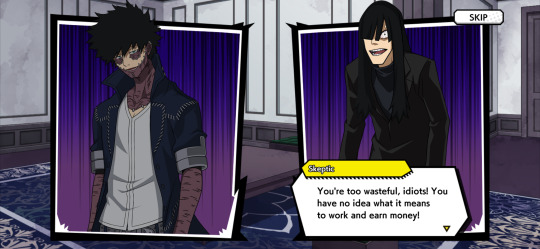

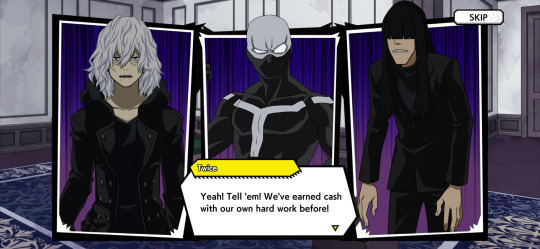
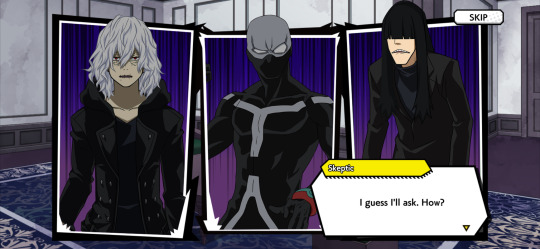

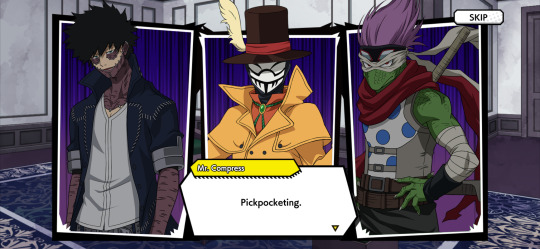
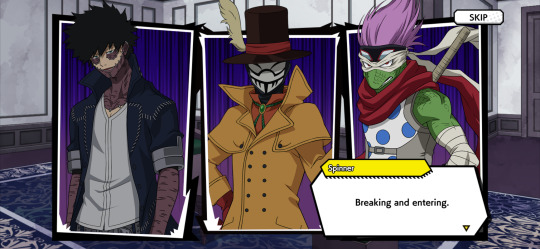

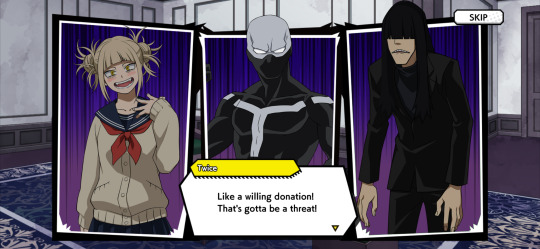
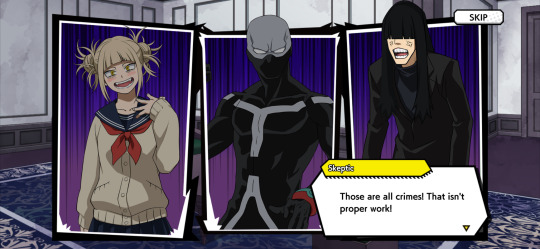
✨ crimes ✨
#nalslastworkingbraincell#Shigaraki Tomura#Skeptic#Chikazoku Tomoyasu#Dabi#Todoroki Touya#Mr. Compress#Sako Atsuhiro#Spinner#Iguchi Shuuichi#Toga Himiko#Twice#Bubaigawara Jin#bnha#mha#heroaca#Ultra Impact
459 notes
·
View notes
Text

Опять мемы калякаю
#art#bnha#shigaraki tomura#boku no hero academia#my hero acedamia#shigaraki fanart#spinneraki#shigaraki#mha fanart#spinner#bnha spinner#spinnaraki#spinaraki#spineraki#spinnerart#tomura shiragaki#shigaraki_spinner#iguchi shuuichi#iguchi fanart#shuichi iguchi#meme#funny memes
564 notes
·
View notes
Text
I’m in a Shigaraki simping competition and my opponent is Spinner. FUCK.
#where did we even sign up for this#bnha#boku no hero academia#my hero academia#mha#league of villains#spinner#shuichi iguchi#iguchi shuuichi#Bnha spinner#tomura#Shigaraki#tomura shigaraki#spinneraki#spinaraki
799 notes
·
View notes
Text









I think it's rly cute that spinner's and toga's birthdays are back-to-back <3
#this comic is so hazardous bc i started drawing it w no idea of what it was gonna be#the light smattering of spinaraki was completely unintentional i swear#spinner and toga's friendship is actually the dearest thing ever i love them sm I'm gonna throw up#AND I'M LATE AGAIN AUGGHHH#one day I'll make a birthday post on time#i was gonna make touya say an offhand hint-hint comment abt how spinner has the same bday as endeavor#but idk where to put that so just know that's he's thinking abt it and giggling rn#bnha#mha#spinner mha#shuichi iguchi#iguchi shuuichi#shigaraki tomura#todoroki touya#bubaigawara jin#toga himiko#spinaraki#implied kinda#league of villains#atsuhiro sako#my artwork
734 notes
·
View notes
Text






league of villains — himiko, shūichi, tomura, tōya
[BNHA – S7E3. “Villain”]
#bnha#bnhaedit#boku no hero academia#bnha s7#bnha s7 spoilers#bnha 7.3#lov#league of villains#toga himiko#iguchi shuuichi#spinner#shimura tenko#shigaraki tomura#todoroki touya#dabi#grin's creations#gc:edits#gc:gifs#gif warning#tw flashing
422 notes
·
View notes
Text
I'm going to be doing a little series drawing the League of Villains VA event skit:

full long post of all pages so far
#mha#shigaraki#bnha#tomura#shigaraki tomura#my hero academia#tomura shigaraki#lov#league of villains#toga himiko#himiko toga#spinner#spinner mha#iguchi shuuichi#dabi#touya todoroki#mr compress#sako atsuhiro#twice mha#jin bubaigawara
580 notes
·
View notes
Text
Anyone else notice how similar Shoji and Stain's hair is now?


This is such a little detail, but I think it's so important, especially with what Spinner told him

Knowing how Stain was a symbol for people who felt rejected by society for their quirks and or appearance, this was definitely intentional on his part to try to also become a symbol of acceptance but in a less violent way (which he's doing great at)
#rea's rambles#mezo shoji#chizome akaguro#shuichi iguchi#spinner#mha chapter 430#mha#mha 430#bnha#shoji mezo#akaguro chizome#hero killer stain#iguchi shuuichi
418 notes
·
View notes
Text

Part 2
#myart#bnha#my hero academia#my art#mha#mha spinner#spinneraki#iguchi shuuichi#tomura shiragaki#bnha shigaraki#Shigaraki x spinner
2K notes
·
View notes
Text

if you did a brain scan on me rn there would be no brain you'd just see spinneraki rotating in there like little music box ballerinas
#kanelitanko#fellas is it gay to literally move mountains for your first and best friend#was it fucking casual#i woke up in a cold sweat when i remembered the ref for the upper left corner existed and needed to bring the vision to life immediately#bnha#mha#spinneraki#spinnaraki#spinner#iguchi shuuichi#shuichi iguchi#shigaraki#shigaraki tomura#shiggy#shimura tenko#boku no hero academia#my hero academia#league of villains#my art#artists on tumblr#or whatever
271 notes
·
View notes
Text
"Dabi is a chill / cool guy" wrong, in fact his whole quirk and emotional struggles are all about how not chill he is. He literally burned himself alive? Twice? He cries blood? He just appeared detached 'cause he is suicidal and he's trying to convince himself that nothing else matters but revenge he's failing.
"Tomura is cruel / dumb / explosive" super wrong, there are several instances of him getting threatened by the League when he either did nothing or calmly reacted to him. There are also several instances of Tomura explaining historical events or sharing facts and strategy with them.
Contrary to what Dabi once suggested on the manga, Compress is known for taking big risks to accomplish his missions and he has an active role whenever the League needs him (jumped against Overhaul and later took his arm, kidnapped Bakugo, used his quirk on himself to allow Spinner and Tomura to escape, fought against Machia with Twice to allow Tomura to rest, etc).
Twice is not just a silly guy, he has actual malice too and he acts on it. Overhaul would have been a great addition if it wasn't for his need to control. He is capable of being cruel for his family the League sake and he was with them because he wanted, not because he was being a naive man being tricked.
Spinner is not a background character but someone really important to the storyline development (maybe Dabi is the second strongest and most active league member after Tomura, but Spinner is the person they all trusted and Tomura's greatest follower).
Toga is not just cheerful-crazy, she is really serious when it matters and like Twice or Dabi or thr rest of the League, a big part of her personality is a consequence of some trauma, in this case the social mask she tried to maintain for the sake of getting approved by her parents.
The League of Villains is more complex than all the stereotypes.
#bnha#mha#my hero academia#boku no hero academia#league of villains#lov#bnha spoilers#mha spoilers#dabi#touya todoroki#toya todoroki#tomura shigaraki#tenko shimura#mr. compress#sako atsuhiro#spinner bnha#spinner mha#iguchi shuuichi#shuichi iguchi#twice bnha#twice mha#jin bubaigawara#twice#spinner#toga himiko
1K notes
·
View notes
Text
Deku probably makes "The League of Villains" required reading in his classes
#my hero academia#boku no hero academia#mha#bnha#mha spoilers#bnha spoilers#mha 430#bnha 430#izuku midoriya#midoriya x reader#deku#spinner#shuichi iguchi#iguchi shuuichi#league of villains#lov
155 notes
·
View notes
Text






old comic. read right to left. sorry for how rough sketchy it is.
Spinner and Shigaraki... 😭
#Spinaraki#Spinneraki#Spinner#Iguchi Shuuichi#Shigaraki Tomura#bnha#mha#HeroAca#nalslastworkingbraincell#nalscrawl#fanart#comic#sorry if Shigaraki is a bit OOC esp. the last line
588 notes
·
View notes
Text

Go for it, Spinner!
#art#bnha#shigaraki tomura#boku no hero academia#my hero acedamia#spinneraki#shigaraki fanart#shigaraki#spinner#mha fanart#spinner fanart#bnha spinner#spinnaraki#spineraki#spinaraki#iguchi fanart#iguchi shuuichi#shuichi iguchi#tomura shiragaki#spinnerart#spinnershigaraki#спиннераки#спинараки
514 notes
·
View notes
Text
I like to imagine that Mr. Compress was released from prison first, and when Spinner gets released, Mr. Compress is there waiting to pick him up.
Spinner: “Can I drive?”
Mr. Compress: “Absolutely not.”
Spinner: “Come on!”
Mr. Compress: “I remember your driving. You just got out of prison, do you want to immediately go back in, Mr. Grand-Theft-Auto?”
Spinner: “… shut up.”
Then they both snicker and hug.
#my babies#bnha#boku no hero academia#my hero academia#mha#league of villains#mr compress#atsuhiro sako#sako atsuhiro#spinner#shuichi iguchi#iguchi shuuichi
358 notes
·
View notes